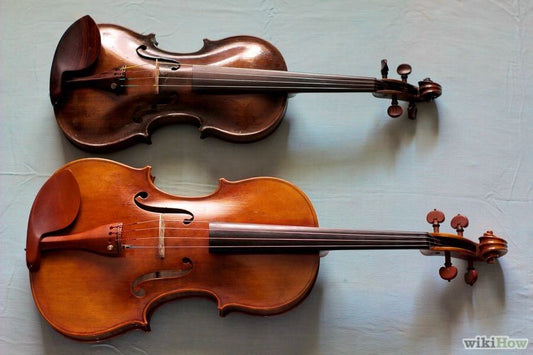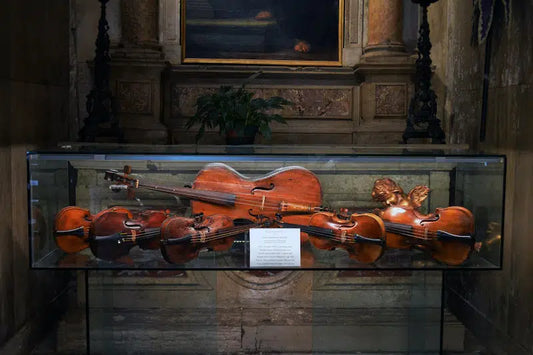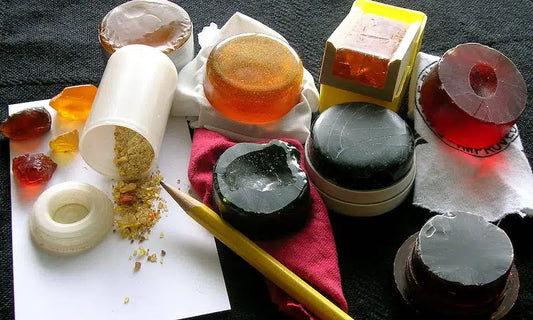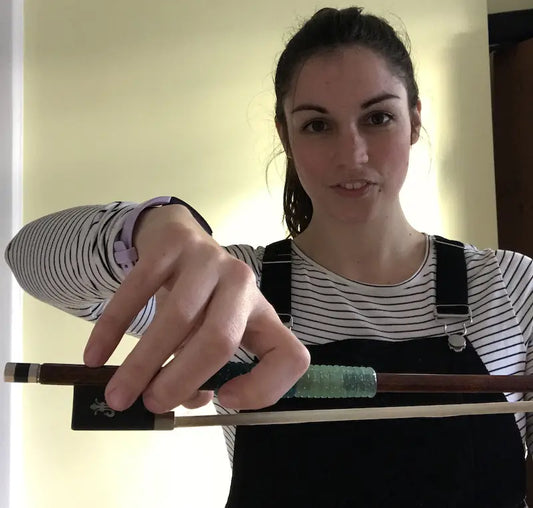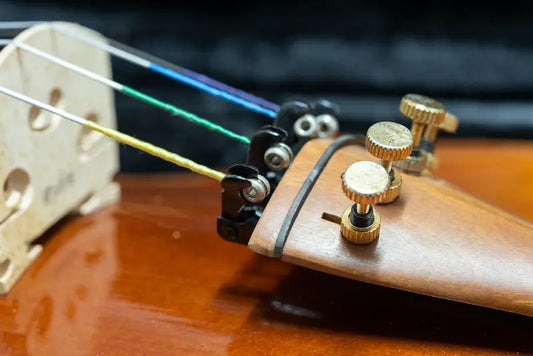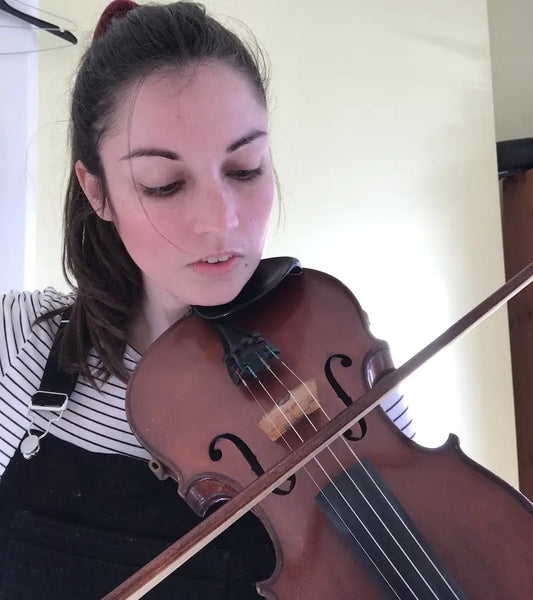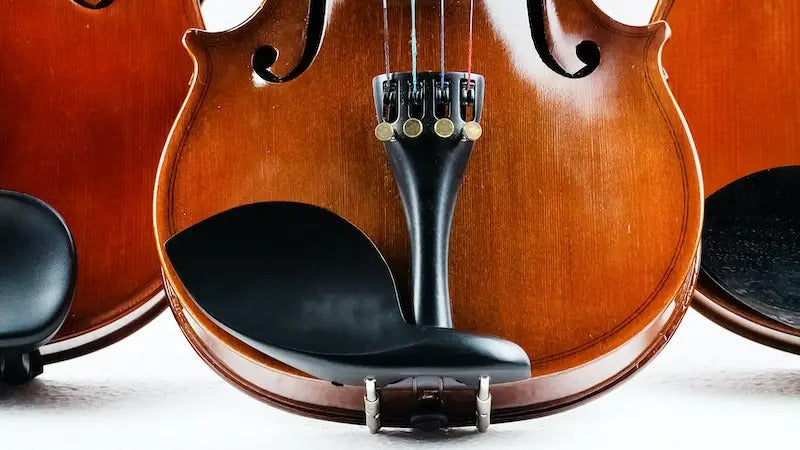
Top 6 Best Violin Chin Rests
Looking for a new chin rest for your violin? Do you find the current one uncomfortable or could it even cause you an allergic reaction? In fact, many violinists go through the same mindset when trying to find the best, most comfortable, and best-suited bassinet for their playing style.
In this article, we'll go over 6 of the best violin chin rests to help you find one that's right for you and your playing style.
1. Wittner Synthetic Violin Chin Rest
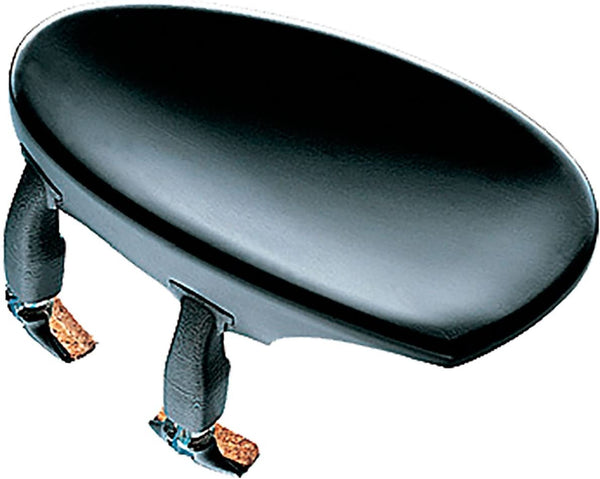
At number one is the Wittner synthetic violin chin rest, which is an affordable choice for violinists of all ages and levels. It's hypoallergenic, so you don't need to worry about your skin having a bad reaction to it.
The composite material of this chin rest is very popular. It won't crack like wood, so you can use it for a long time. Therefore, this is a perfect choice if you are looking for a new chin rest.
2. Chin rest SAS Ebony

SAS Ebony chin rest for violin 3/4 - 4/4. This chin rest is said to be ideal to use when you are playing violins of this size. This chin rest has a height of 32mm, however you can fully adjust it. That way, you'll be able to play the violin comfortably and without having to struggle to keep the instrument in place. And if you decide to learn the viola, you can also use this chin rest.
3. Flat Flesch chin rest

The Flat Flesch 3/4 - 4/4 Violin Chin Rest is another great model for the two largest violin models. This chin rest has a pink coating that looks very nice and provides comfort to the user.
This chin rest comes with a mounting tool, so you can easily place it on your violin. It may be a bit tall for a 3/4 violin, but is a great fit for a full-size violin. This chin rest is also quite affordable so you can try it out.
4. Soarun Black Chin Rest
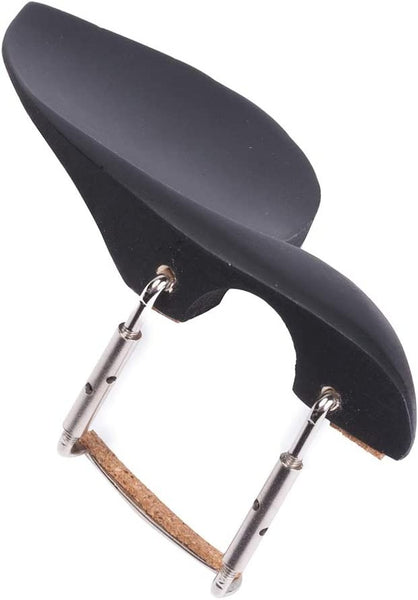
One of the most affordable violin stands is the Soarun Black model. This chin rest is very durable so you can use it for a long time without any problems. It also has a flat surface, so you can play the violin comfortably for long periods of time. However, you will need to have a 4/4 violin to fit this chin rest.
5. Flat Flesch chin rest

The Flat Flesch 4/4 violin chin rest is another option to consider, especially if you prefer a center mounted chin rest this is the right chin rest. This chin rest uses ebony to match the tail and neck and it's also very affordable.
6. Wittner WITT253111
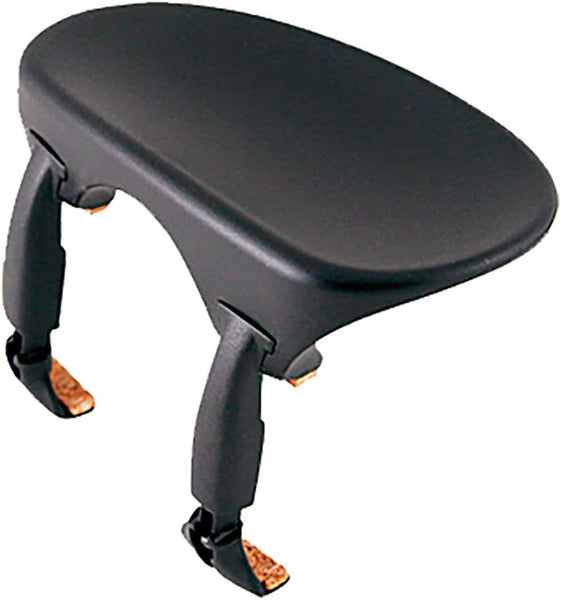
Another center-mounted chin rest to consider is the Wittner WITT253111. It uses synthetic materials, which is great for violinists whose skin is sensitive to wood. You also won't have to worry when using for a while, the wooden surface of the chin rest will crack.
However, this model is only suitable for 4/4 violins. But there is a similar model for 1/4 and 1/2 size violins. With these chin rests, you can get the same benefits as the Wittner WITT253111.
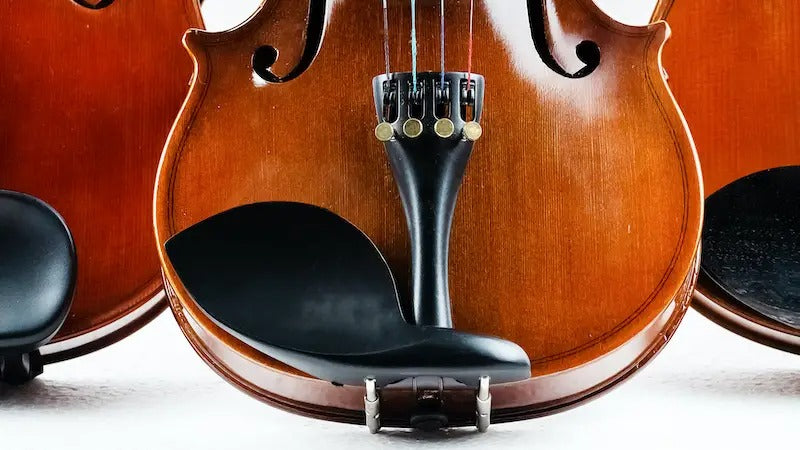
How to choose a violin chin rest?
Chin rests are indispensable for many violinists. It is usually sold with the guitar. Most buyers will choose the included chin rest instead of finding another chin rest that fits their own needs. However, using the included product sometimes does not bring comfort to the player.
There are countless violin chin rests, in a variety of shapes, sizes, colors, etc. When you are shopping for a chin rest for your violin, understand that there is no such thing as a right or wrong choice. Choosing an instrument chin rest comes down to personal preference and, more importantly, how comfortable it is.
Different types of violin chin rests
There are many types of violin chin holders, with their main difference being in their height and position on the violin.
Height of chin
When shopping for violin chin rests, you'll find three different heights: low, medium, and high. Chinrest height describes the height of the chin rest relative to the body of the violin. Choose the height of the chin rest depending on your own size and preferences.
For example, if you have a shorter neck, then you might prefer a lower chin rest for your violin.
The position of the chin rest: side mounted or center mounted. The chin rest is coupled to the violin body by a bracket system. There are side- and center-mounted chin rests for violins.
Chin Rest Size: The size you choose for your chin rest will depend on your jaw structure and size. There are countless options available to you, regardless of your jaw size or structure.
For example, if you have a larger jawline, you may find it more comfortable with a large chin rest and curved design. If your jaw is thick then you can use a flat shape chin rest. Similarly, if your jaw is small, you may prefer a smaller chin rest to hug your jaw.
Chin rest material
Chin rests can be made from a variety of materials depending on preference and budget.
Plastic Chin Rest: The chin rest that you often see on manufacturers' violins is made of plastic. Because of its low price, many customers choose this material.
The plastic chin rest is easy to clean and clean after you're done playing, however, since it's made of plastic, it's also easy to slide out if your skin gets wet. If your skin produces a lot of oil or if you sweat a lot while playing, you may have more trouble with the plastic chin rest than with alternative wooden chin rests. This is considered a disadvantage of plastic chin rests.
Wooden chin rest: Compared to plastic chin rest, wooden chin rest is more expensive. Many of the wooden chin rests you find on the market have been custom-carved instead of being placed into a prefabricated mold. However, as we all know, wood material has many natural pores and absorbs moisture easily, so it will be "thinner" and difficult to clean when used for a while.
You'll be able to find wooden chin rests made from a variety of woods, the most popular of which are ebony, boxwood, and rosewood.
How to avoid allergies to the chin rest?
As a violinist, you may be allergic to the chin rest of the instrument. Your chin rest will come into direct contact with your skin when you play the violin, and although this is rare, a violinist can be allergic to the material that makes their violin chin rest. , especially with the different types of wood used to make the chin rest.
If your skin is naturally sweaty or greasy, it helps to regularly wipe the chin of your violin while playing. Sweat and oil on the skin when left on the chin rest surface without being cleaned will cause you to develop pimples or rashes.
Chin rest plate
If you find the violin's chin rest uncomfortable, you can try using a different shaped chin rest. But if you like the shape and are still uncomfortable to use after a long time playing, then you can buy a cover for the chin rest. Using the chin rest on the chin rest of the violin is a great alternative.
Chin rests are available in a variety of materials and types, and also have excellent moisture absorption and are easily washable depending on the material you choose. Some chin rests are attached to the body of the violin, while others are attached to the chin rest itself.
Durability of chin rest
Chin rest can be used for a long time with proper care. Experts recommend that you keep the chin rest away from moisture to prevent it from rusting or getting dirty. Similarly, if your violin's chin rest is covered with any material, regularly cleaning the chin rest will also preserve its coating.
Price
The price of violin chin rests varies depending on the materials used and their mounting construction. But in general, the chin rest is quite cheap compared to other accessories for the violin. The price of chin rest cushions ranges from more than 200,000 VND to 1 million.
See more:
